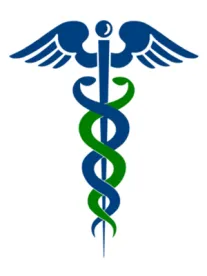Many of our readers will recall the decision from Judge John Jones III of the Middle District of Pennsylvania earlier this year, denying the Federal Trade Commission’s (FTC) motion to enjoin 551-bed Penn State Milton S. Hershey Medical Center and the three-campus, 646-bed PinnacleHealth from merging in Pennsylvania’s mid-state region. There, Judge Jones found that general acute care is not “inherently local” and that the FTC’s alleged relevant geographic market was “untethered to the commercial realities facing patients and payers.” This was based on evidence that a significant number of patients traveled from outside the FTC’s alleged geographic market to obtain care within it. Thus, according to Judge Jones, patients and payors could turn to alternative providers in a much broader area due to patients’ willingness to travel for care.
In an abrupt change of fortunes for the FTC, the Third Circuit on September 27, 2016, reversed and remanded Judge Jones’ decision and directed the District Court to preliminarily enjoin the Hershey/Pinnacle merger pending the outcome of the FTC’s administrative adjudication of the matter.
Central to the Third Circuit’s decision was its determination that Judge Jones improperly formulated and applied the “hypothetical monopolist” test, which both parties conceded was the proper test to determine the relevant geographic market for hospital mergers. In particular, the court took issue with:
(1) The District Court’s focus on the number of patients entering the proposed market
(2) The District Court’s decision to ignore the likely effect that the merger would have on payors’ behavior in the marketplace
(3) The weight the District Court gave to the hospitals’ agreement with certain payors not to raise rates for a period of time after the merger was consummated
With respect to the first issue, the Third Circuit opined that focusing on patient inflow was inconsistent with the hypothetical monopolist test and also resulted in a “misleading” picture of the geographic market. In response to the second issue, the court found that the commercial realities of the health care market today mandate that any analysis of relevant geographic markets must include an analysis of how payors would likely respond to the merger. If payors would react to the merged system’s small price increase by looking to hospitals outside the market, then the geographic market has been defined too narrowly. If, on the other hand, payors would likely respond by accepting the price increase, rather than looking elsewhere for provider services, then the geographic market has been properly defined.
In regards to the third issue, the court found that whether or not the parties had entered into rate agreements with payors was irrelevant to the hypothetical question of whether or not they could ultimately exercise market power. Opining that “private contracts between merging parties and their customers have no place in the relevant geographic market analysis,” the Court cautioned that to hold otherwise would allow antitrust defendants to escape enforcement of the antitrust laws simply by entering these types of agreements in order to manipulate market definition in their favor.
The Third Circuit indicated that its holding was narrow and was not meant to imply that the hypothetical monopolist test is the only way to define geographic markets for hospitals, but that where the parties, the FTC, and the District Court had agreed that it was the appropriate test, the District Court was bound to apply it in the proper manner.
The Third Circuit then went on to hold that the FTC successfully established a prima facie case that the merger is likely to lead to anticompetitive effects in the marketplace — based on the merger’s purportedly high Herfindahl-Hirschman Index (HHI) score, and the post-merger market share alleged by the government. In response, the hospitals asserted an efficiencies defense to demonstrate why, on balance, the merger would not be anticompetitive. However, the Third Circuit noted that, on several occasions, the U.S. Supreme Court and other federal appellate courts have “cast doubt” on the availability of an efficiencies defense. Based on this precedent, and on the Clayton Act’s silence on the availability of the defense, the Third Circuit expressed skepticism that such a defense even exists. Setting aside its doubts, the Third Circuit went on to hold that even if an efficiencies-based defense exists, providers must clear a high bar in order to succeed on the defense. The Third Circuit made clear that citing clearly merger-specific efficiencies (e.g., avoiding multimillion dollar capital expenses) may not be enough to succeed on an efficiencies-based defense, where it is unclear that the benefits will flow to consumers.
The Seventh Circuit is set to issue a decision in the coming weeks relating to the propriety of a district judge’s denial of the FTC’s motion to temporarily enjoin the merger of Advocate and NorthShore in the northern suburbs of Chicago. The Seventh Circuit’s decision will likely provide additional insight into both the hypothetical monopolist test and the application of the efficiencies-based defense.






 />i
/>i

